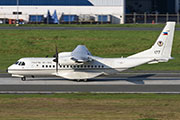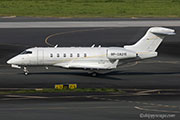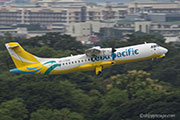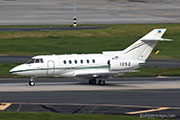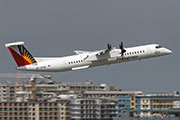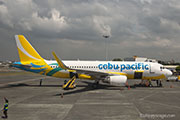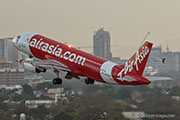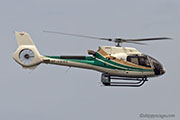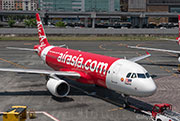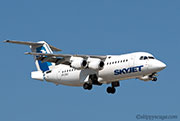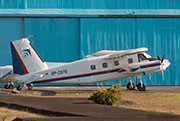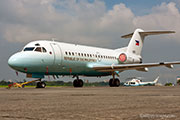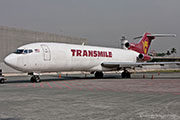Subscribe to receive updates via: e-mail list | Facebook | Instragram | Twitter
Comments:18th April 2012 Peter ten Duis
Unbelievable!! So good to see 'our' old -DOA and -DOB, albeit in a sad state. I was fortunate enough to fly these as a KLM pilot back i the 70s as FO, and later, mid 80s as Captain.
Is there any way I micht obtain a photo of RP-C1545 and -C1546?
When were your photos taken?
Thanks and thanks again for showing these pics
Peter ten Duis
[photo/serial list]
[photos from behind the scenes]
Prop Aircraft notes:
Manila International Airport is chocked full of aviation from the past, some of these aircraft are still flying but most will never feel the air beneath their wings again.
When you land or take-off from Manila Ninoy Aquino International Airport you cannot help but notice the contrast between the old and the new. Terminal 1, the International gateway, is old and crowded and once through to the gate area, small and uncomfortable with very little in the way of facilities. In contrast Terminal 3, the new domestic building, is huge; spacious and with everything you need to make your journey as comfortable as possible. The same can be said of the aircraft on the airfield. Rakes of Boeing 747, 777, A330 and A320s adorn the landscape, but look closer and you'll find all kinds of interesting aircraft tucked away, mostly out of view of the new aircraft and international terminal's sight.
Some of these aircraft can be seen from the departure gates of Terminal 3 but what you can glimpse from there is only part of the story as many aircraft are hidden behind the buildings. The light here is usually in one of two modes. Extremely bright, creating a huge contrast between whites and shadows, or overcast with the smoggy sky a uniform white. Consequently, photography here can be a challenge.
When Japan retired all of its YS-11s many found their way to the Philippines with Manila becoming the hub of YS-11 operations. Back then you could find lots of colorful YS-11s operating, but now, even here, the YS-11's days are numbered. There is a single example left in service and this one is only used by Interisland Airlines when charters dictate or during the peak-season for flights to Kalibo on the island of Panay to the south. This aircraft seems to be well looked after and wears a striking red, white and blue colour scheme. They also have a Yak-40 stored here, but this has not flown for some time so is presumably stored.
Other YS-11s stored here include RP-C3585 belonging to Aboitiz / 2GO which still looks to be flyable at least with all control surfaces intact and engines still in place. This is in stark contrast to RP-C2677 which is sitting on the grass with its Dart engines removed. 2GO no longer flies aircraft itself but instead utilises the hold capacity of Cebu Pacific's large network. Another one that's still looking good is RP-C3588 which used to fly with Asian Spirit but has long since had all its titles and colours removed.
There were a further two YS-11s on this grass area. First of all RP-C3587 which is painted in the colours of BIMP-EAGA Air Alliance and is starting to look decidedly worse for wear with a very dirty upper fuselage, although it still has its engines intact. BIMP-EAGA is the acronym for the very wordy Brunei Darussalam, Indonesia, Malaysia and The Philippines - East ASEAN Growth Area, with ASEAN standing for Association of Southeast Asian Nations - phew! The flags of the four countries are painted on the tail of the aircraft.
The second aircraft RP-C2252 belongs to Airlink International Airways and Aviation School based on the airfield and is in excellent condition. I assumed it was stored and used as a ground trainer when I saw it on my first visit but the last time I was in Manila they had the engines running. There were reports that the aircraft performed a flight in March 2010 so presumably it is still used from time to time.
A lone An-24B RP-C7205 belonging to Mosphil Aero is the last relic of a startup company founded in 2005 to take advantage of the BIMP-EAGA "open skies" policy and first flew in November 2006, but it's unclear when it ceased operations.
Keeping to the grass storage area there are many aircraft here that have been grounded for a very long time indeed. Stand-out is the Winkys Fish C-121J Constellation which has been here since June 1988 when it was hauling tuna between the Philippines and Guam, developed trouble and needed repairs in Manila. While that was being done there were legal issues that went to the courts in Manila and during that battle an order was passed that prevented any flights, effectively impounding the aircraft. The process took so long that the owner ran out of money to continue the battle in court and abandoned the aircraft. She's been there ever since and, considering the long passage of time, she is still in remarkably good condition.
There are no less than six C-47/DC-3 aircraft stored here and two of them look as if their days are coming to an end very soon. RP-C1354 has had its wings removed since my first visit and RP-C1352 is even further along the reclamation route with its tailplane also now missing. Both these airframes belong to CM Aero Services and I guess they are parting them out for their active C-47B. RP-C535 with Victoria Air is here because I assume the company stopped operations after the tragic accident involving C-47D RP-C550 on 17th October 2009. Two Swiftair airframes still survive with engines (RP-C147 and RP-C368) in the storage area - Swiftair operated this pair between 1972 and 2000.
DHC-4 Caribou RP-C2702 used to operate out of Clark and the last photo evidence that I can find of it there was in 2006. It's currently stored at Manila and it'll be interesting to find out when it made the short flight. This is an ex USAF AC-1A / C-7 aircraft (62-4160) and was also N800NC after its release from MASDC.
One of the busiest small operators here is CM Aero Services which operates a single C-47B plus a sizable fleet of Beech 18s, all used for cargo work. The Beech 18 fleet is a mixed one with E18S, G18S and H18 tricycle gear variants. The staff were more than happy to pose and wave while I wandered around the fleet and on each occasion that I either visited the airport for photos or to transit through, I always saw one of their Beech 18s flying, so business is hopefully good.
Back to Russian aircraft and the Let L-410 seems to have been a popular aircraft here in the past. There were still five present on my recent trips with two seemingly stored and the rest still looking to be in service with Lion Air and SEAir.
Dornier is also represented with Do228s from two operators, Island Transvoyager Inc (ITI) and A. Soriano Aviation, both of which are charter operations.
There's quite a large fleet of British aircraft here and most are still in operation which is always nice to see. British Aerospace manufactured types include an ATP and a Jetstream 32. On my first visit the ATP was owned by Aviastar and operated for Air Aceh which are both Indonesian. On my second visit the Aviastar titles had been removed, as had the logo on the tail, but it still carries Air Aceh titles. This aircraft used to fly with Loganair as G-LOGG and Manx as G-MANB when in the UK. It has been reported that the aircraft is in Manila for a maintenance check, although it's been present for over a year now. The Jetstream 32EP was operated by Royal Star Aviation which also operates a 41 series aircraft.
The most numerous of the British contingent here is Britten-Norman with Islander and Trislander aircraft, both ideally suited to small airfield operations. As one pilot that flew the Trislander in Guernsey always used to say "they are very agricultural aircraft". Pinoy Air had three Trislanders here (C-GOXZ, G-BDOT and G-OJAV) although I can't find any details on its operations at all. Islanders are more prevalent and Pacific Missionary Aviation has a pristine example in its own hangar. There were also Islanders being worked on having being stripped completely bare so there is clearly a local market for them.
Dash 7 aircraft have gone out of favour since Asian Spirit changed its name to Zest Airways and many of these airframes are dotted around awaiting sale, while Zest has concentrated on operating only three types; the A319, A320 and the Chinese Xian MA60. The MA60 is a stretched version of the Y7-200A, which itself is a further variation of the licensed built An-24, and is proving popular with sales in Africa, Asia and South America both to civilian and military markets.
Another aircraft of interest was an Aero Commander 680 belonging to Certeza which provides survey and photo services, although the aircraft doesn't look as if it flies too often.
So Philippine aviation has Russian, Japanese, British, American, Canadian, German, Dutch (Air Force F-27/F-28), Italian and Chinese aircraft operating from its shores - an incredibly diverse spread - and I'd wager that you'd be hard pressed to find another airport with aircraft from so many countries present. I'd appreciate any corrections or updates as concrete histories of both airframes and companies is hard to track down in thre region.
Jet Aircraft notes:
Dornier is represented with a sole Do328 (RP-C7328 / ex Suckling and Cityjet as G-BYML) belonging to SEAir which actually has a sizable fleet of these aircraft, but this was the only one present on both of my visits.
Zest Airways currently operate the A319 and A320 while the Philippines flagship carrier used to be Philippine Airlines (PAL) but the organisation is now a mere shadow of its former self after financial issues which necessitated cutbacks in routes, aircraft and employees. Cebu Pacific took this opportunity to re-equip its fleet of DC-9s and Boeing 757s with ATR-42 and A319/A320 aircraft and expanded in the domestic market to such an extent that it is now the dominant carrier internally. It also flies internationally but both PAL and Cebu Pacific currently remain on the EU list of banned carriers, as indeed do all Philippine carriers. A few of the Cebu Pacific DC-9s are still stored at the present time. Of interest, RP-C1537 was with Inex Adria as YU-AJF and BMA as G-BMWD, RP-C1545 was with KLM as PH-DOA and RP-C1546 also with KLM as PH-DOB. Air Philippines, now known as Airphil Express, has also performed a fleet update replacing its YS-11, Boeing 737-200 and MD-88 aircraft with newer fleets comprising A320 and Dash 8.
There are still some older jets that arrive in Manila on freight schedules too, notably Transmile which is based in Malaysia with Boeing 727-200/Adv(F) airframes; always good to see.
Military Aircraft notes:
There are not a lot of military or government aircraft based out of the Ninoy Aquino International Airport in Manila, but what is there is pretty interesting.
The most high profile of the based squadrons in the military corner of the airport, known as Colonel Jesus A. Villamor Air Base, is the 250th Presidential Airlift Wing, which operates a fleet of aircraft and helicopters on behalf of the Philippine President.
The flagship of the fleet is Fokker F-28-3000 (c/n 11153) which was built in 1979 and is currently registered as 1250. It was originally delivered as RC-C1177 in 1980 into the hands of Government Financial Institutions (GFI), before being donated to the Office of the President (as RP-1250), and was then transferred to the inventory of the Philippine Air Force in 2007 when the RP was dropped from the serial.
The 3000 series was produced with a shorter fuselage length than the original 1000 series, and has a greater structural strength and increased fuel capacity. This variant was popular with various governments around the world as executive and VIP transport. Still fitted with its original Rolls-Royce Spey Mk555-15H engines, which was a simplified and lighter version of the original Spey engine, also known as the "Spey Junior" in some circles. With the relatively short range of the F-28 the President will use a Philippine Airlines 747-400 for long-range journeys, but the F-28 whenever practical. Although it doesn't have hush-kits installed, the F-28 can still fly to most countries in the region with the exception of Singapore, which has noise restrictions.
This F-28 has very low airframe hours at only 5696 with the aircraft expected to fly around 200 hours per year. This aircraft is certainly kept in extremely good condition.
The Presidential Airlift Wing also operates a single F-27-200 (59-0259 c/n 10115). This aircraft is a backup to the F-28 and also serves to fly security personnel in advance of the F-28 to secure the area of visits. Unusually this aircraft carries a full military serial as opposed to the RP that designates government aircraft.
This airframe was originally delivered to the Philippine Air Force on 2 September 1959 and was the 15th F-27 built (the 13th to fly as two were used for static tests), and this is currently the oldest F-27 still active in the world. It was converted from a 100 to 200 series in 1966.
Along with the two fixed wing assets, the Presidential Airlift Wing also operates a variety of helicopters. The only airframe that I had access to was a Bell 412HP (RP-2000).
The Philippine Air Force also operates a further pair of F-27s under the 220th Airlift Wing. 10669 is an F-27-500RF and was in service with Jersey European Airlines as G-JEAH (I flew on this airframe with JEA many times) and later with EuroCeltic Airways as G-ECAH. 10620 is an F-27-200MPA that was delivered new to the Philippine Air Force.
There are a further three F-27s that have been withdrawn from use and are stored just outside the two military ramps. 10327 and 10267 are both F-27-200s, originally built as 100s for Philippine Airlines in 1965 and 1967, and later transferred to the Air Force. 10310 is a 1966 example that took the same route as the other two examples. All still had their engines intact in 2010 but by 2011 they all had the engines removed.
On to a couple of unusual types that can be found at this airfield. First up a SIAI-Marchetti SF-600TP Canguro (RP-3101 c/n 009) of which only 10 were built. The original prototype was bulit with Lycoming piston engines, but production models were built with Allison 250 turboprops. When SIAI-Marchetti were taken over by Augusta, a venture with Sammi in South Korea to build these aircraft plus others came to nothing, and a similar venture with he Philippines Aerospace Development Company (PADC) also come to nothing. Two examples were delivered to the Philippines with RP-C1298 (c/n 008) ditching in the sea on 1 September 1977, near to Fortune Island to the south west of Manila. Ten people were on board with one becoming a fatality. The example still extant is in very faded Philippine Coast Guard colours. The licence was later obtained by Italian company Vulcanair along with the Partenavia P.68.
Another unusual airframe is the PADC X-100A Hummingbird, which was built locally as a design for the Philippine Air Force. It was a re-design of the Bolkow Bo105 but PADC was threatened with sanctions by MBB and the project was cancelled with only this single frame being modified.
I also spied a Philippine Coast Guard Cessna 421 (401) on a previous trip (but not seen since). This was acquired in 2000 without cost from the Bureau of Soils and Water Management, but due to current budgetary constraint, the aircraft is not yet in service.
The last local government aircraft I saw was a Philippine National Police BN-2A Islander (RP-4177) while a US Navy UC-12F reportedly based at NAF Atsugi, Japan was also parked on one of the ramps.
Manila Airport is a difficult airport to shoot at both from a weather standpoint and a bureaucracy point of view. It took me three trips to come away with what you see here, but the effort was worth it in the long run.
